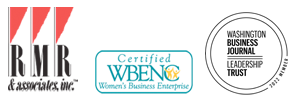Putting Your Product on the Fast-Track to Success:
The Importance of a Go-to-Market Approach in Your Marketing Arsenal
By Robyn Sachs, President and CEO of RMR & Associates
Integrated marketing approaches have skyrocketed in popularity over the last several years, for a largely two-fold reason 1) their emphasis on ‘matching the vehicle to the goal’ enables a more efficient, results-driven process focused on specific needs. 2) This process leverages an organization’s budget to ensure they are receiving the ultimate ‘bang for their buck.’
While integrated marketing approaches can and should be implemented at several stages of a company or product’s evolution, one critical phase is in the early days of a market launch, entry, and growth. Known as a “Go-to-Market Strategy”, this process combines key elements of integrated marketing activity to deliver a comprehensive, structured plan designed to achieve maximum market success.
So, how does a Go-to-Market approach work – and who does it work best for? First, it’s important to note that the elements of a Go-to-Market initiative can be put into practice for companies and products at all stages of development, from emerging enterprises and start-ups to established organizations. In terms of key activities, part of what differentiates a Go-to-Market approach from other market entry plans is the systematic structure behind it, along with the extensive market research and positioning, vetting, and strategic elements that use a process-driven approach that draws on leading industry best practices. This ‘Business Case’ focus allows organizations access to a large amount information, with appropriate targeting, to ensure they are as prepared as possible to achieve success and market growth.
A typical Go-to-Market plan consists of five phases, which may be tailored to a specific company or product’s needs, current market positon, and future goals. These include:
- Phase 1 – Internal audit of existing systems, infrastructures, and initiatives;
- Phase 2 – External market research and competitive analysis activity to determine market position, differentiating qualities, and growth opportunities;
- Phase 3- Market segmentation and targeting analysis;
- Phase 4- Implementation planning and development; and
- Phase 5- Development of a comprehensive business plan and financial models.
A strategic and informed market entry approach is key to lasting success, particularly in the areas of market segmentation and targeting to ensure your organization receives the largest return from its marketing investment while climbing to new heights of growth and development.
#

